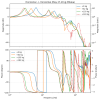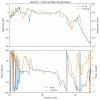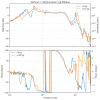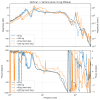[RTakahashi, Washimi]
Yesterday, we measured the hardness of the spear rubbers (Hs=80) for the OMC stacks, at NAOJ Mitaka, TAMA West-end.
| Number | Hardness [JIS K 6301] |
| 80-1 | 78 |
| 80-2 | 78 |
| 80-3 | 78 |
| 80-4 | 78 |
| 80-5 | 79 |
| 80-6 | 79 |
| 80-7 | 79 |
| 80-8 | 78 |
| 80-9 | 78 |
| 80-10 | 78 |
| 80-11 | 78 |
| 80-12 | 78 |
| 80-13 | 78 |
| 80-14 | 79 |
| 80-15 | 78 |
| 80-16 | 79 |
| 80-17 | 79 |
| 80-18 | 78 |
We used the #1~3 and #8~10 for the test at Mitaka.




















